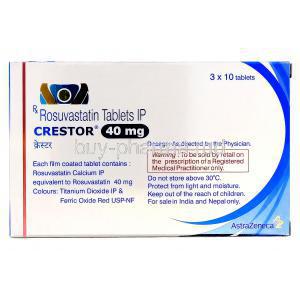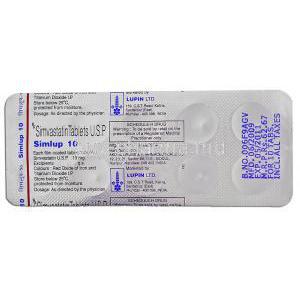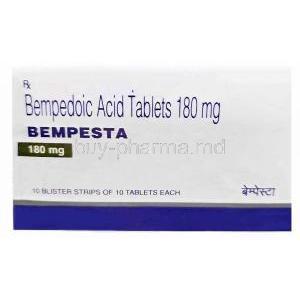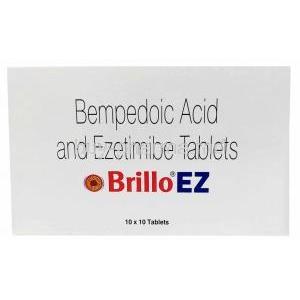Crestor
- Introduction
- Uses
- How it Works
- Off-label Use
- Dosage and Administration
- Side Effects
- Common Side Effects
- Composition
- Storage
- Interaction
- Warning
- Contraindication
- Careful Administration
- Important Precautions
- Administration to the Elderly
- Administration to Pregnant Women and Nursing Mothers
- Administration to Children
- Overdosage
- Handling Precautions
- Conclusion
Introduction
An overview of the history of Crestor: Crestor, which is also known as rosuvastatin, made its debut in the medical field during the early 2000s. AstraZeneca, a company, developed it and quickly gained recognition as a highly effective medication for lowering lipid levels. Significance in medicine: Crestor is essential in today's pharmacopeia as it provides hope for individuals with cardiovascular risks. Its consistent ability to reduce cholesterol levels has made it a preferred choice among healthcare professionals when treating patients with hyperlipidemia.

Uses
Crestor (rosuvastatin) is primarily prescribed to treat high cholesterol, specifically targeting LDL cholesterol1. It is also used to prevent events like heart attacks and strokes in certain high-risk groups1. Crestor works by lowering LDL cholesterol levels, reducing triglycerides, and increasing HDL cholesterol levels1.
Properly managing cholesterol is crucial for maintaining heart health. By reducing the buildup of plaque in the arteries, Crestor plays a role in preventing potential complications of atherosclerosis, such as heart attacks or strokes1.
References:
How it Works
How Crestor works in the body: Crestor is a type of medication called a statin. It blocks an enzyme called HMG CoA reductase, which is vital for making cholesterol in the liver. As a result, the liver takes up LDL from the bloodstream, lowering cholesterol levels. The role of statins in controlling cholesterol: Statins, like Crestor, have entirely transformed how we manage cholesterol. They fall in cholesterol levels and have additional effects, such as reducing inflammation and improving the function of blood vessels. These added benefits contribute to their impact on cardiovascular health.
Off-label Use
Crestor (rosuvastatin) is primarily prescribed to treat high cholesterol, specifically targeting LDL cholesterol1. However, it has also been explored in the world of medicine for other potential benefits.
Initial data indicates that Crestor may have advantages in treating conditions like alcoholic fatty liver disease2 and certain inflammatory disorders2. However, further rigorous trials are needed to confirm these findings.
References:
- Crestor Uses, Dosage & Side Effects - Drugs.com
- Crestor, Ezallor Sprinkle (rosuvastatin) dosing, indications, interactions, adverse effects
- Crestor Side Effects: Nausea, Liver Disease, and More - Healthline
- Nonalcoholic fatty liver disease - Symptoms and causes
- Alcohol-Related Liver Disease - Liver and Gallbladder Disorders - MSD
Dosage and Administration
The recommended dosage for Crestor depends on the individual's treatment objectives and personal traits. Generally, adults begin with a dose of 5 to 10 mg, which may be adjusted based on how they respond to the medication and their tolerance level. People who have liver problems, kidney insufficiency, or are taking other medications might require adjustments in their dosage. It's crucial to monitor liver enzymes and kidney function for these individuals.
Side Effects
Overview of side effects; Crestor is usually well tolerated but it can cause a range of reactions. These can include issues with muscles and bones and in very rare cases more severe problems with the liver or kidneys. Considering the pros and cons, Every medical intervention comes with its risks. It's crucial for doctors to carefully weigh the benefits of using Crestor against any adverse effects in order to achieve the best outcomes, for patients.
Common Side Effects
The commonly reported reactions; Out of the many possible side effects, muscle pain, fatigue, and headaches are the most frequent complaints, among Crestor users. To manage and reduce these symptoms, it is advisable to monitor kidney and liver function. In case of muscle pain, adjusting the dosage or temporarily stopping the medication might be suggested.
Composition
Crestor contains Rosuvastatin calcium as its active ingredient, along with other supporting elements like microcrystalline cellulose, lactose monohydrate, and magnesium stearate. These additional components play a role in ensuring the effective delivery and stability of the medication. The formulation of Crestor has been carefully designed to maximize its bioavailability and enhance its effectiveness. The combination of inactive ingredients works synergistically to provide a consistent therapeutic outcome promoting patient adherence and satisfaction.
Storage
It is recommended to store Crestor in a dry place at room temperature, away from direct sunlight. Make sure to keep it out of reach of children and pets. Avoid exposing it to temperatures or moisture and shield it from natural light sources. Not following these storage guidelines can result in reduced effectiveness of the medication. It may even cause adverse reactions in some cases.
Interaction
Common drug and food interactions: When taking Crestor along with medications, it can either enhance or reduce its intended therapeutic effects. Some notable interactions include anticoagulants, certain antacids, and specific antiviral drugs. Additionally, consuming grapefruit and its related products can increase the concentration of Crestor in your system, thus increasing the risk of experiencing side effects. It is highly recommended that you consult healthcare before introducing new medications. Regularly reviewing your medication regimen with a healthcare provider can help. Manage potential interaction risks.

Warning
Individuals with preexisting liver disease, renal impairment, or specific genetic conditions may face an increased likelihood of experiencing reactions while taking Crestor. If any unusual symptoms, like muscle pain, dark-colored urine, or yellowing of the eyes and skin, occur, it is essential to seek immediate medical attention.
Contraindication
Under no circumstances should Crestor be used by individuals with known allergies to any of its ingredients, those with liver disease, or pregnant women. People with a history of alcoholism, hypothyroidism, or previous liver diseases should be cautious and closely monitored while taking this medication.
Careful Administration
When it comes to groups it's important to customize the treatment plan based on factors like age existing medical conditions or other unique traits. This helps us get the benefits while reducing any potential risks. To ensure safety while taking Crestor, we need to monitor liver enzymes check lipid levels, and assess kidney function. These routine checkups are essential, for maintaining your well-being throughout the treatment process.
Important Precautions
To ensure the effectiveness of Crestor, patients should be cautious about their alcohol intake in addition, to avoiding foods and medications. It is essential to pay attention to any symptoms that may indicate muscle, liver or kidney problems. To guarantee safety throughout the treatment process it is crucial to adhere to the recommended dosage and regularly consult with your physician.
Administration to the Elderly
Dosage adjustments: As people age, their bodies may process drugs differently. So it is often recommended to start with a dose for older individuals to minimize potential side effects. Increased caution should be taken with the population as they might be more vulnerable to specific adverse reactions, such as muscle-related issues or kidney complications.
Administration to Pregnant Women and Nursing Mothers
According to studies regarding safety, Crestor falls under category X and should not be used during pregnancy as it may harm the fetus. Additionally, breastfeeding mothers should avoid taking Crestor since it is uncertain whether the drug is excreted through breast milk. It is recommended that women of childbearing age use contraception while taking Crestor and be informed about the potential risks of birth defects.
Administration to Children
Dosage recommendations for children; Crestor can be used in age groups of children, but it should be noted that the dosages are usually lower and must be determined by a healthcare professional. It is essential to prioritize safety and effectiveness, in populations so careful monitoring of growth, development, and potential side effects is necessary, even though Crestor has shown efficacy in reducing cholesterol levels in pediatric patients.
Overdosage
Symptoms of taking much Crestor may include muscle weakness, joint pain, or digestive issues. However, it is uncommon for an overdose to lead to life-threatening conditions. If you suspect an overdose, seek medical attention and consider supportive treatments, like gastric lavage, which can be helpful.
Handling Precautions
To ensure that Crestor remains effective it is essential to handle and store it properly. Clean hands should be used when taking the medication. It should be stored in its original container. It is also crucial to keep Crestor out of the reach of children. When Crestor reaches its expiration date or is no longer needed it is recommended to either participate in take-back programs or consult with a pharmacist, for disposal. These precautions help prevent ingestion and promote safety.



































